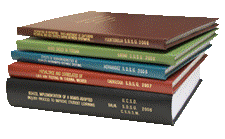Libraries, University of Nebraska-Lincoln

Archival Master’s Theses from the University of Nebraska-Lincoln
First Advisor
Thomas J. Helms
Date of this Version
5-1976
Document Type
Thesis
Abstract
The microsporidian, Nosema loxagrotidis sp. n., as described herein was first observed in larvae of the western bean cutworm, Loxagrotis albicosta (Smith), during 1970 (T. J. Helms, unpublished data). All life history stages of L. albicosta exhibit spores and vegetative stages of N. loxagrotidis. During the period 1970-75, 100% of the specimens examined contained either spores or vegetative stages of the microsporidian. However, there is no apparent mortality due to N. loxagrotidis infection.
Although N. loxagrotidis is morphologically indistinguishable from N. heliothidis Lutz and Splendor and N. trichoplusiae Tanabe and Tamashiro, J. V. Maddox, Jr. (personal communication, 1975) recommended that a species description be prepared for N. loxagrotidis based on his comparative host range and polar filament extrusion studies of these species. N. loxagrotidis will not infect certain hosts that are infected by N. heliothidis and N. trichoplusiae and the polar filament of N. loxagrotidis will not extrude in solutions at pH values established for extrusion of N. heliothidis and N. trichoplusiae polar filaments.
In this study, the life cycle stages of N. loxagrotidis and its histology are described. The stages of the parasite in L. albicosta tissues, initiation and course of infection, and comparisons with other microsporidian infections in other Lepidoptera are discussed.


Comments
A Thesis Presented to the Faculty of The Graduate College in the University of Nebraska in Partial Fulfillment of the Requirements for the Degree of Master of Science, Department of Entomology, Under the Supervision of Professor Thomas J. Helms. Lincoln, Nebraska: May, 1976
Copyright (c) 1976 Paulina Po-lun Su